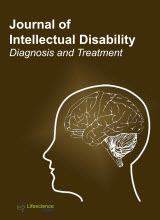jiddt
|
|
Abstract: Objective: In the process of creativity, the child develops intellectually and emotionally, determines its attitude towards life and its place in life, acquires the experience of collective interaction, improves its skills in working with various tools and materials. Keywords: Creative thinking, preschool age, intellectual and emotional development of a child, humanisation of the pedagogical process, interpersonal interaction.
|
|
|
Abstract: Objective: The article is devoted to the definition of critical thinking skills, the stimulation of critical thinking in language teaching. One of the requirements of the global linguistic globalisation is functional literacy, which involves a degree of native languages. Today the objective historical principal is the nomination of more serious requirements to the knowledge level and skills of students. Keywords: Qualified specialists, educational process, law schools, educational motivation, critical thinking.
|
|
|
Abstract: The objective of this study was to find out the level of emotional intelligence of preschool teachers-methodologists with the purpose of further professional advancement (enhancing their emotional competence). Tools applied for collecting and processing statistics were the following: survey results, methodologist’s checklists of observation of conducting classes by the teacher, N. Hall’s Emotional Intelligence Test, questionnaires for parents. There was also a survey of training participants followed by written feedback. STATA software was used for data processing, and the online TextAnalyzer utility was used to process free responses from the parent questionnaires. It is found that the system of formation of emotional intelligence, based on the training we have developed, has a positive impact on the development of emotional intelligence of preschool teachers-methodologists. The above approach enhances the knowledge of preschool teachers about their emotions, senses and feelings, contributing to the development of their ability to understand their own emotions. After the training, 7.14% of the participants showed a low level as opposed to the initial level of 33.33%. The medium level rose significantly, from 60.0% to 78.6%. And the high level of awareness of emotional intelligence in teachers has increased more than twice - from 6.67% to 14.29%. The arithmetical mean for raw scores also increased - from 43.87 to 57.54, thus confirming that the system used in training allows developing strategies for modulation of their emotions, introducing the training participants to the techniques of expression of their emotions and developing a range of emotional competency skills aimed at overcoming emotive situations. Since during the analysis of the lessons by the methodologist the teacher had to respect both the positive and negative response of the methodologist and since respect is a component of leadership, we can say that the feedback contributed to the development of leadership qualities of teachers. Regarding pedagogical skills, provided that the teacher constantly works on self-improvement of emotional intelligence, we state that the level of the teacher’s pedagogical skills also improves. We consider it reasonable to further explore the possibilities of developing the competence of emotional intelligence in future teachers during their study in higher educational institutions and preschool teachers. Keywords: Emotional intelligence, teachers-methodologists, emotional awareness, modulation of emotions, self-motivation.
|
|
|
Abstract: An investigation was undertaken to explore the social environment in a mainstream classroom that housed both non-autistic and autistic students. The research focus was to see if engaging students in a particular programme, successfully reduced stigma. The research is founded upon the concept of autism as part of neurodiversity rather than only disorder. It posits affective and social outcomes of inclusive education can be a reality once stigma is exposed and autism, reframed. The literature reviewed yielded valuable insights into how best to support the rationale of this study to prepare typical classmates for entry of autistic children. Keywords: Autism, inclusion, stigma, peer awareness, empathy, mainstream classrooms.
|
|
|
Abstract: Objective: The study aims to identify the possibility of using a set of methods that a future teacher can apply upon working with schoolchildren, and value-based attitudes, which subsequently develop the students' desire to learn. Keywords: Professional education, learning processes, association, structure, training, development.
|


